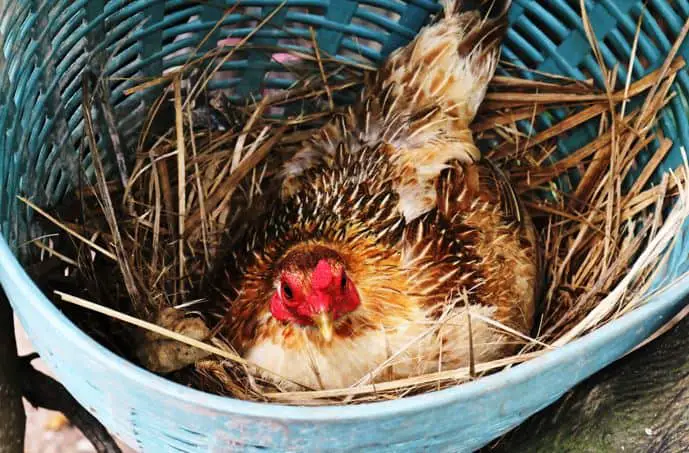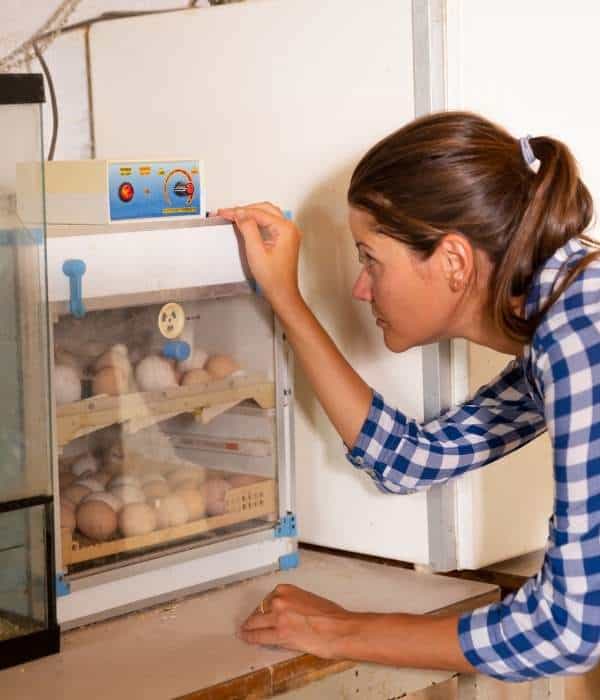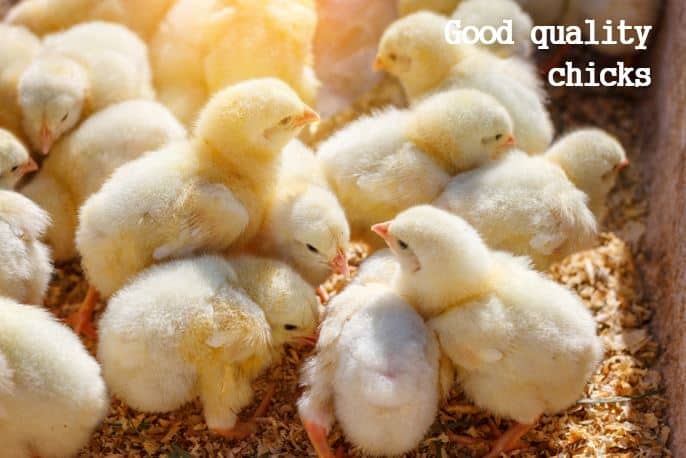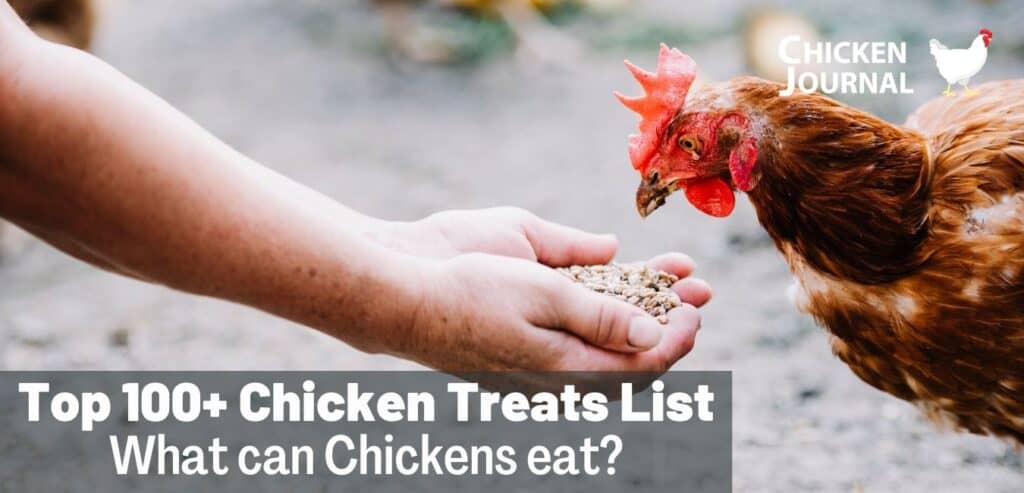Do you want to know all about incubating and hatching chicken eggs? Well, it’s a great idea.
Before hatching eggs at home, you must know how it works.
Buying an incubator and putting eggs inside does not result in successful hatching.
Poor incubation may result in weak chicks, or excessive long incubation may kill your upcoming baby chicks.
That’s why going through a definitive guide on incubating and hatching chicken eggs will help you.
This complete guide helps you know about incubator operations, functions, and procedures for 21 days of incubation.
Also read: Best incubators for hatching eggs
History of Egg Incubators
The Egyptians had a traditional method of incubating eggs in 400 BC, using a cylindrical building or oven with a fire at the bottom.
Eggs were covered in an inverted cone partially covered in ash. The eggs were kept in a woven basket at the top of the ashes. The roof of the building lets the smoke escape and prevents rain from coming inside.
Controlled scientific incubation requires an accurate temperature range to function properly, and to do so, the alcohol-based thermometer is used.
It was made by the French naturalist and scientist René Antoine Ferchault de Réaumur in 1730, and hence, the temperature scale is also named after him.
Réaumur used the thermometer in his design for an artificial incubator, which was presented to the Académie des Sciences in 1747 and was published in 1749.
It was published as “The art of hatching and rearing the domestic birds of all species and in all seasons, either using the heat of manure or by ordinary fire”.
Lyman Byce created a coal lamp incubator in 1879. The first commercial machine was made by Hearson in 1881.
Ira M. Petersime of Gettysburg, Ohio, USA, invented the electric egg incubator in 1922. After that, he and his son manufactured the best incubators for chickens. They were granted several patents for design features and other improvements.
The innovation of an electric incubator with expanded capacity offered a model that held 15000 eggs, which encouraged the growth of large-scale commercial hatcheries.
Also read: How to Take Care of a Broody Hen in Winter?
How Long Does It Take To Hatch Chicken Eggs?

Most of the chicken eggs hatch within 3 weeks (21 days). Sometimes it may vary one to two days before or after 21 days.
This is an amazing period when a poultry farmer waits for the hatching of chicken eggs.
After 21 days, chicks break the eggs, come out, and move around the hen. Baby chicks fight with each other to eat insects and take natural brooding below their mother’s wings.
So, let’s go back before 21 days…
21 Days of Chicken Egg Hatching Process
First, a hen lays her eggs. Then, after that, she sits on eggs for 21 days to give them the proper temperature for hatching. This process is called natural hatching.
During this period, he moves and turns her eggs using her beak and body to give equal heat to all sides of the eggs.
Hen gives her body heat by sitting on the eggs for 21 days; after that, chicks emerge.
When chicks emerge from eggs, they take the heat below the hen’s wings. This is natural brooding, which is helpful for baby chicks’ initial growth and development.
Sometimes, few hens won’t sit on their eggs. Those hens are called non-broody hens. After that, they start mating again. This occurs mostly in egg laying chickens.
In those types of situations, you need to use artificial brooding methods. Here is our complete guide on brooding chickens.
But, nowadays, many egg hatcheries use incubators to hatch millions of eggs simultaneously. After hatching, they deliver those chicks to chicken farmers.
So, now it’s time to learn about chicken egg incubators.
What is Chicken Eggs Incubator?

A chicken egg incubator is a device that provides artificial hatching of eggs. This machine works by providing proper warmth and humidity to the chicken eggs.
It has various automatic and manual temperature control options for accurate hatching of eggs.
The hatching business is growing rapidly because of the high demand for broiler and Asel-type breed chickens.
Large hatching industries are emerging due to the outrageous demand for chicken meat. Some companies hatch lakhs of chicks in one day using large industrial incubators.
There are different names for egg incubators, like breeding machines, hatchers, setters, artificial incubation machines, etc.
Chicken Egg Hatching Process in 5 Easy Steps
In 21 days, the process of hatching chicken eggs is complete. A day has 24 hours.
Because of environmental factors and improper incubation of eggs, sometimes it may take one day fewer, which means 20 days, or one day more, i.e., 22 days. Both natural and artificial chicken hatching take the same 21 days.
You must buy or take the largest, cleanest, unbroken eggs for artificial chicken hatching.
The most important aspect of chicken hatching is the long 21-day hatching time. So, we should not waste our time on bad-quality eggs.
Bad-quality eggs result in abnormal growth and death of chicks. Also, this type of low-quality chicks has high early mortality rates. So, selecting bad-quality eggs leads to a major loss in the hatching business.
But If you are a small farmer or passionate about hatching eggs at home, follow the steps below.
Step 1: Select Eggs for Hatching
Egg selection is crucial to hatching. Choose high-quality eggs for best hatching. Be sure your backyard chicken farm eggs are clean, fresh, and undamaged.
For eggs purchased elsewhere, let them relax for 24 hours before putting them in the incubator. Check all eggs before keeping them on the farm.
Because egg hatching rates decline after 10 days, do not retain the egg longer. Keep them cold, but not in the fridge.
Rotate eggs regularly to preserve the yolk in the middle. Do not wash eggs.
Here is our guide on common questions: how long do fresh eggs last?
Step 2: Get Your Chicken Egg Incubator Ready
- FOR CHICKENS, DUCKS & PHEASANTS: This incubator for...
- 360° VISIBILITY: Our egg incubator features 360°...
- 360° INDUCED AIRFLOW: Achieve optimal hatch rates with...
- HUMIDITY CONTROL: Our user-friendly duck egg incubator...
- AUTO TURN & STOP: Effortlessly achieve optimal hatch...
Last update on 2025-07-17 / Affiliate links / Images from Amazon Product Advertising API
First of all, your incubator for hatching. Whatever your type of incubator, you can easily complete the hatching process by following the tutorial.
But you can read the guide to selecting a good incubator if you don’t have one. Selecting an incubator is also a point to consider.
Some chicken egg incubators come fully automatic, and a few have manual features. Automatic incubators have some extra features like – Turning and Automatic temperature controls.
So, read the guide below, and you will understand which type and size incubator you need.
What Size of Chicken Egg Incubator Do You Need?
A 10-egg capacity incubator is enough for incubating 4-5 chicken eggs. But if you need to incubate 20-30 eggs, selecting a 40-50 egg capacity incubator is better.
For Multiple Types of Bird Eggs
Some farmers keep different types of poultry birds, like chickens, ducks, geese, birds, pigeons, and quail, on their farms for small business purposes. If you are like that, using a multiple-size egg incubator is better.
So, you can incubate unique types and breeds of poultry eggs in the same incubator.
Few Best Automatic Chicken Incubators
- Incubator for eggs heats to factory pre-set of 100...
- Automatic incubator features a digital display that...
- Eliminates manual handling for up to 41 eggs and deep...
- Large picture window provides 360 degrees unobstructed...
- Egg incubator and turner features easy-fill water...
- Easy to Use: Magicfly egg incubator is easy to set up...
- Durable and Reliable: Made of durable healthy PP+ABS...
- Automatic Egg Turning: The auto turner can save the...
- Compact Desgin: Equipped with movable dividers, it fits...
- 100% Satisfaction Guarantee: We provide detailed...
Last update on 2025-07-17 / Affiliate links / Images from Amazon Product Advertising API
Here is our list of top 10 eggs incubators for chicken, duck and quail eggs
Step 3: Maintain Your Incubator Temperature and Humidity
Then, keep your chicken eggs inside the incubator. There are two types of incubators: forced air and still air incubators.
The difference is only a fan. In a forced air incubator, a fan blows air inside the incubator to make the temperature constant everywhere.
Still, in an air egg incubator, the temperature increases gradually to fill inside the incubator. But if the incubator automatically turns eggs, it’s great.
So, in a forced air incubator, the temperature should be maintained between 99.5- 100°F, and in a still air incubator, it should be maintained between 101–102°F.
Most incubator companies tell us to keep 45-50% humidity for the first 18 days of incubation and then 60-70% for the rest.
Step 4: Checking the Egg Fertility and Candling Method
During the incubation period, it is better to check the fertility of the eggs. Natural fertility may vary from season to season. During the summer, eggs have a 40-60% fertility rate if kept long before hatching.
Winter fertility ranges from 70 to 80%, but the process may take a few extra days due to the frigid temperatures. In the rainy season, it is about 70-90%.
But in an artificial incubator, the outside temperature doesn’t affect the fertility rate due to its automatic humidity and temperature control features.
- 🐓Suitable for use with almost every egg type - from...
- 🐓Candling your eggs helps you to identify fertile...
- 🐓Battery powered for convenience and uses...
- 🐓Easy to operate – simply position your egg on top...
Last update on 2025-07-16 / Affiliate links / Images from Amazon Product Advertising API
In most chicken eggs, embryo development starts after a week of incubation. You can see it by doing candling. You will see little veins and embryo structures inside the egg.
If you don’t see any development and changes within 9-10 days, replace those eggs with fresh eggs.
If you are replacing any new eggs, you can put a date on eggs to overcome the confusion of messing up older eggs with fresh eggs. During candling, you will see blood rings and veins inside the eggs. It shows that the embryo is developing.
Step 4: Turning and Lockdown period
Turning chicken eggs must be done for about 14-15 days. The first two weeks are most important for proper turning, but you can also turn them for 17-18 days during incubation. The last three days before hatching are called the Lockdown period.
You should not turn the egg during the last three days. If it is an automatic machine – switch off the turning process but not the incubator. Also, increase the humidity level to 65-70%.
Step 5: Hatching of eggs and moving chicks

You will see the hatching of eggs starts after day 21 or 22. Do not remove the chicks from the incubator; they still look completely dry and puffed (soft and puffier).
Newly hatched eggs can easily live for 2-3 days without eating. They live due to the yolk they eat during the incubation period.
After that, chicks are ready for brooding. Keep chicken waterer and feeder inside your brooder area before transferring them.
Conclusion
The process of egg incubation and hatching is very interesting. It needs a lot of focus and care for successful hatching.
A small mistake may damage your incubated eggs. Every step matters, from selecting suitable eggs to optimizing the incubator’s temperature and humidity.
From the above definitive guide, you will learn the growth of embryos and baby chicks from eggs.







Would like to know more and how to Biya big incubator machine
I didnt find it onlinw, where you know about this incubator machine